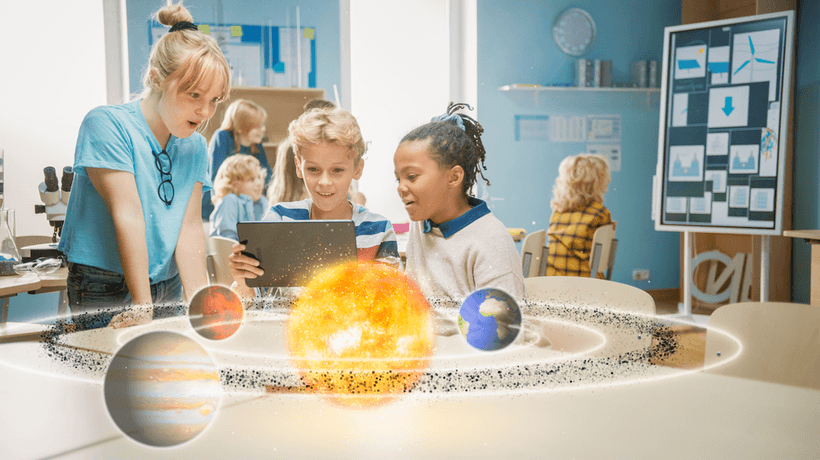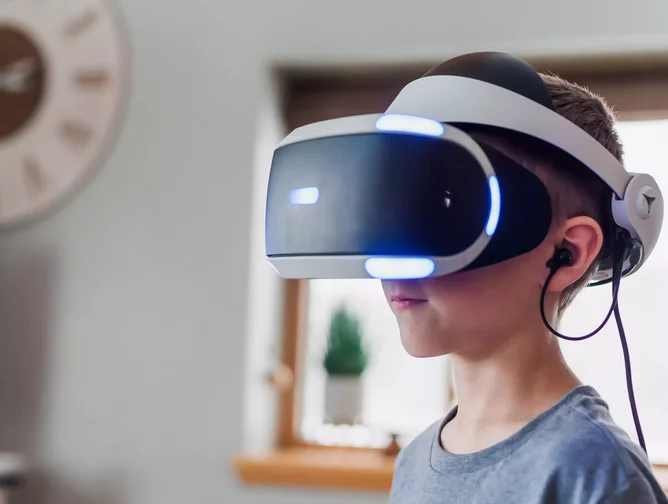The landscape of education is undergoing a seismic shift, moving away from the one-size-fits-all model of traditional classrooms toward a more personalized, interactive, and engaging paradigm. At the heart of this transformation are artificial intelligence and a new generation of smart devices. The latest AI Education Gadgets News is no longer about simple electronic toys but about sophisticated tools that can adapt to individual learning styles, teach complex concepts like coding and robotics, and prepare students for a future dominated by technology. These gadgets are transforming passive consumption of information into active, hands-on problem-solving. From AI-powered robotics kits that teach the fundamentals of engineering to immersive AR experiences that bring history to life, intelligent technology is creating a dynamic and responsive learning environment. This article delves into the burgeoning world of AI educational gadgets, exploring the core technologies that power them, their real-world applications in STEM and beyond, and the critical considerations for their effective and ethical implementation in our homes and schools.
The Evolving Ecosystem of Smart Learning Gadgets
The journey of educational technology has been one of rapid evolution. We’ve moved from clunky desktop computers running basic software to a rich ecosystem of interconnected, intelligent devices that can see, hear, and interact with the world in remarkably sophisticated ways. This new wave of technology is not just digitizing old methods; it’s creating entirely new pedagogical possibilities.
From Simple Toys to Sophisticated Tutors
For decades, electronic learning toys have been a staple of childhood. However, their capabilities were often limited to pre-programmed responses. The integration of artificial intelligence marks a fundamental departure from this model. Today’s smart educational devices are not just reactive; they are adaptive. The latest developments in AI Toys & Entertainment Gadgets News highlight toys that can understand natural language, recognize faces and objects, and personalize their interactions based on a child’s progress. For example, an AI language-learning companion can do more than just recite vocabulary; it can listen to a child’s pronunciation, offer real-time corrective feedback using sophisticated speech analysis, and tailor future lessons to focus on areas of difficulty. This is the core difference: the move from a static script to a dynamic, personalized learning dialogue, a trend also seen in the latest AI Assistants News where devices are becoming more context-aware.
Key Technology Drivers: AI, IoT, and Edge Computing
Several key technologies underpin this educational revolution. At the forefront is, of course, Artificial Intelligence (AI) and Machine Learning (ML). These allow devices to process vast amounts of data, identify patterns, and make intelligent decisions—the very essence of personalized learning. Natural Language Processing (NLP) enables verbal interaction, while computer vision gives gadgets the ability to “see” and interpret their surroundings. This is a major focus of AI-enabled Cameras & Vision News, as smaller, more powerful camera modules become ubiquitous.
The Internet of Things (IoT) provides the connectivity fabric. An educational robot, for instance, can connect to a cloud platform to download new learning modules or upload a student’s progress data for a teacher to review. This network of connected devices is a cornerstone of modern tech, as reported in AI Sensors & IoT News. Complementing this is the rise of edge computing. To provide the instant feedback necessary for a seamless learning experience, many calculations must happen on the device itself, rather than in a distant data center. The latest AI Edge Devices News focuses on the development of powerful, low-energy processors that enable complex AI tasks, like real-time object recognition, to run locally, reducing latency and enhancing privacy.
Deep Dive: AI in Robotics and STEM Education
Perhaps nowhere is the impact of AI in education more apparent than in the field of robotics and STEM (Science, Technology, Engineering, and Mathematics). Robotics provides a tangible, exciting way for students to learn abstract concepts like logic, physics, and programming. AI elevates this learning from simple command-and-control to genuine problem-solving and creation.

Human-Like Planning and Interaction
Early educational robots were often limited to following lines on the floor or executing a precise sequence of pre-programmed movements. The latest Robotics News, however, is filled with examples of systems capable of dynamic interaction with their environment. Inspired by advancements seen in everything from Robotics Vacuum News showcasing intelligent navigation to cutting-edge AI Research / Prototypes News, educational robots can now perceive and navigate cluttered, unpredictable spaces. Instead of programming a robot arm to move to specific coordinates, a student can now give it a higher-level goal, such as “find and pick up the blue block on the messy table.” The robot’s AI planner must then use its sensors to identify the target object, distinguish it from others, calculate a collision-free path for its arm, and execute the grasp. This process teaches students computational thinking and mirrors the complex challenges solved in fields like logistics and manufacturing.
The Role of Computer Vision and Sensors
This advanced capability is made possible by a suite of sensors and sophisticated AI models. High-resolution cameras, a topic frequently covered in AI Cameras News, serve as the primary input. The video feed is processed by an onboard neural network trained to recognize a variety of objects, colors, and even human gestures. This is supplemented by other sensors—ultrasonic for distance measurement, infrared for proximity, and gyroscopes for orientation. The fusion of this data, a key theme in AI Monitoring Devices News, creates a rich, real-time understanding of the environment. A student working with such a robot learns not only coding but also the fundamentals of data science and machine learning as they see how the robot uses sensor data to make decisions.
Case Study: The Modern AI Robotics Kit
Consider a modern educational robotics kit. It typically includes a powerful single-board computer, a high-definition camera, and multiple sensors. The accompanying software, often accessed via a tablet or smartphone as seen in AI Phone & Mobile Devices News, provides a dual interface: a simple, block-based coding language for beginners and a full Python or C++ environment for advanced users. The true innovation lies in the AI modules. Students can use a simple interface to collect images and train a custom computer vision model. For example, they could teach their robot to differentiate between a happy and a sad face, or to recognize their family pet. In doing so, they are no longer just consumers of technology but are actively participating in its creation, a trend that aligns with the growth of AI Tools for Creators News.
Beyond Robotics: AI’s Expanding Role in Educational Technology
While robotics is a flagship application, AI’s educational influence extends across a wide spectrum of tools and disciplines, reflecting a broader trend of technological integration into daily life. The same AI principles that are making our homes and cities smarter are now making our learning tools more effective and accessible.
Personalized Learning and Accessibility
One of the most profound promises of AI in education is its ability to cater to the individual. Adaptive learning platforms can assess a student’s performance in real-time and adjust the difficulty and content of lessons accordingly. This is particularly transformative for students with unique learning needs. The latest AI for Accessibility Devices News showcases gadgets that can read text aloud for the visually impaired, transcribe spoken language for the hearing impaired, or provide structured guidance for students with cognitive disabilities. This personalization extends to well-being, with insights from Health & BioAI Gadgets News and AI Sleep / Wellness Gadgets News showing how cognitive performance is linked to overall health, a factor that future AI tutors could potentially monitor and incorporate into learning plans.
The Immersive Classroom: AR, VR, and Smart Glasses

Augmented Reality (AR) and Virtual Reality (VR) are powerful educational tools, and AI makes them even more effective. As reported in AR/VR AI Gadgets News, AI can power intelligent virtual characters that act as guides in historical simulations or tutors in virtual science labs. The latest developments in Smart Glasses News point to a future where students on a field trip can see historical information overlaid on their view of ancient ruins, with an AI guide answering their questions in real-time. This gamification of learning, a concept borrowed from AI in Gaming Gadgets News, makes complex subjects more intuitive and memorable by transforming them into interactive experiences.
Cross-Pollination of AI Innovation
The rapid innovation in educational AI doesn’t happen in a vacuum. It benefits from and contributes to advancements across the entire tech landscape. The conversational abilities of an AI tutor are built on technology developed for the systems featured in Smart Home AI News and AI Audio / Speakers News. The navigation logic in an educational robot shares principles with the technology driving Autonomous Vehicles News and even Drones & AI News. The user-friendly interfaces are inspired by the latest Smart Appliances News and AI Office Devices News. Even niche areas like AI Pet Tech News, AI Kitchen Gadgets News, and AI Gardening / Farming Gadgets News contribute by pushing the boundaries of sensor-based interaction and autonomous decision-making. This interconnectedness, from AI in Fashion / Wearable Tech News to Smart City / Infrastructure AI Gadgets News, demonstrates that the core AI skills students learn are universally applicable.
Implementing AI Ed-Tech: Tips, Pitfalls, and Recommendations
The potential of AI educational gadgets is immense, but realizing it requires a thoughtful and critical approach. Simply introducing a new piece of technology into a classroom or home is not enough; it must be integrated with clear pedagogical goals and an awareness of the potential challenges.
For Educators and Parents

Best Practices: The primary goal should always be to enhance learning, not just to use technology for its own sake. It’s crucial to select tools that align with specific educational objectives and encourage critical thinking and creativity. The best AI gadgets are those that serve as a platform for exploration rather than a source of rote answers. Integrating these tools into a balanced learning diet that still includes hands-on, non-digital activities and social interaction is key.
Common Pitfalls: A significant concern is data privacy and security. These devices can collect sensitive information about a child’s learning patterns and even their image or voice. It is imperative to scrutinize the privacy policies of manufacturers and opt for products that prioritize data protection, a topic central to AI Security Gadgets News. Another pitfall is the risk of creating a new digital divide, where access to these often-expensive tools is limited to affluent students, exacerbating educational inequalities. Finally, an over-reliance on AI tutors could potentially hinder the development of self-directed learning skills and resilience in the face of academic challenges.
Looking to the Future: Neural Interfaces and Beyond
Looking ahead, the convergence of AI with other emerging fields promises even more radical transformations. The nascent field of brain-computer interfaces, a hot topic in Neural Interfaces News, could one day lead to learning systems that adapt not just to a student’s behavior but to their cognitive state, optimizing the flow of information for maximum retention. We may see the rise of lifelong AI Companion Devices News, personal robots that evolve from being an AI Personal Robots News feature to a constant educational partner, assisting with everything from homework to professional skill development.
Conclusion
The era of AI-powered educational gadgets is here, and it is fundamentally reshaping how we learn, teach, and interact with information. These intelligent tools are moving education beyond the static pages of a textbook and into a world of interactive, personalized, and hands-on discovery. From sophisticated robots that teach the intricacies of coding and engineering to adaptive tutors that cater to individual learning needs, AI is unlocking unprecedented potential. However, harnessing this potential requires a mindful approach. For educators, parents, and developers, the focus must remain on leveraging these powerful technologies to foster curiosity, critical thinking, and creativity. The future of education will not be a choice between a human teacher and an AI gadget, but a powerful partnership between them, creating a learning ecosystem that is more engaging, effective, and equitable for all.










